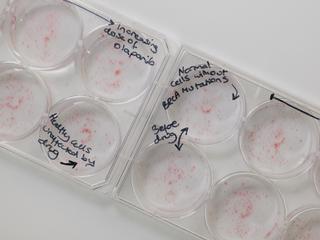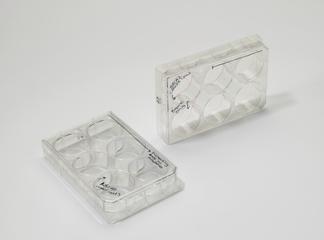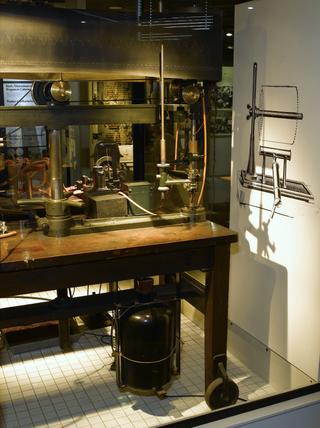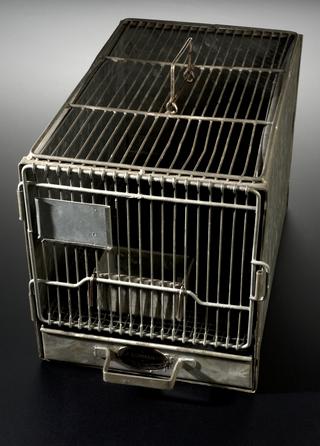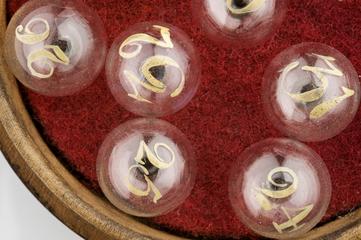




Mock-up of Constantin-Manganin thermocouple in dewar flask, c.1950 with some silvering removed to show interior
When heated the two coils of metal (manganin and constantin) shown in this cut away dewar flask, are heated an electric current is produced. This piece of equipment is known as a thermocouple.
It is shown here in a set of equipment similar to the one used by A V Hill (1886–1977), a physiologist who researched animal heat and energy exchanges in nerve and muscle from 1910 onwards. It is typical of the set up he used in the 1950s in his laboratory at University College London.
An isolated muscle is placed on coils of wire and connected to an electrical stimulus, controlled by a switch. The muscle is also attached to the kymograph to record when the muscle contracts. When the muscle is stimulated, heat is produced and transferred to the thermocouple.The thermocouple is attached to a galvanometer to record the electric current produced.
Details
- Category:
- Laboratory Medicine
- Object Number:
- 2010-80
- Materials:
- metal
- Measurements:
-
overall: 400 mm x 200 mm x 150 mm,
- type:
- thermocouple
- credit:
- Univesity College London
